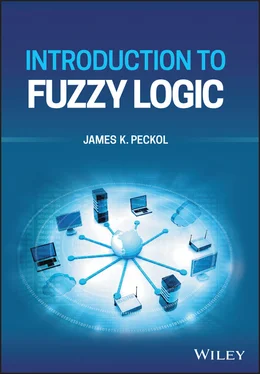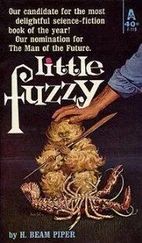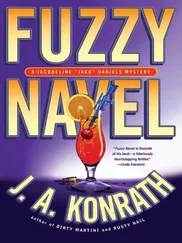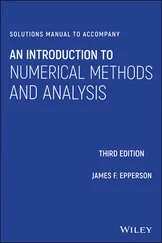James K. Peckol - Introduction to Fuzzy Logic
Здесь есть возможность читать онлайн «James K. Peckol - Introduction to Fuzzy Logic» — ознакомительный отрывок электронной книги совершенно бесплатно, а после прочтения отрывка купить полную версию. В некоторых случаях можно слушать аудио, скачать через торрент в формате fb2 и присутствует краткое содержание. Жанр: unrecognised, на английском языке. Описание произведения, (предисловие) а так же отзывы посетителей доступны на портале библиотеки ЛибКат.
- Название:Introduction to Fuzzy Logic
- Автор:
- Жанр:
- Год:неизвестен
- ISBN:нет данных
- Рейтинг книги:4 / 5. Голосов: 1
-
Избранное:Добавить в избранное
- Отзывы:
-
Ваша оценка:
- 80
- 1
- 2
- 3
- 4
- 5
Introduction to Fuzzy Logic: краткое содержание, описание и аннотация
Предлагаем к чтению аннотацию, описание, краткое содержание или предисловие (зависит от того, что написал сам автор книги «Introduction to Fuzzy Logic»). Если вы не нашли необходимую информацию о книге — напишите в комментариях, мы постараемся отыскать её.
Learn more about the history, foundations, and applications of fuzzy logic in this comprehensive resource by an academic leader Introduction to Fuzzy Logic
Introduction to Fuzzy Logic
Introduction to Fuzzy Logic
Introduction to Fuzzy Logic — читать онлайн ознакомительный отрывок
Ниже представлен текст книги, разбитый по страницам. Система сохранения места последней прочитанной страницы, позволяет с удобством читать онлайн бесплатно книгу «Introduction to Fuzzy Logic», без необходимости каждый раз заново искать на чём Вы остановились. Поставьте закладку, и сможете в любой момент перейти на страницу, на которой закончили чтение.
Интервал:
Закладка:
I can't lift it. It's very heavy .
Are we close to the city yet?
We're roughly about thirty minutes away.
Is that shower warm?
It's very, very hot.
Is he tall?
Yes, he's very, very tall.
Is she smart?
Trust me, she's incredibly smart.
Each of the responses to the questions above is somewhat vague and imprecise yet, for the most part, each provides a reasonable answer that is probably well understood. Each expression in italics is called a fuzzy
linguistic variable rather than a crisp real number or a simple “yes” or “no.” The expressions give a high‐level view of fuzzy logic or fuzzy reasoning. Accompanying such reasoning we also find threshold logic and perceptrons, which model the brain.
In daily life, we find that there are two kinds of imprecision: statistical and nonstatistical. Statistical imprecision is that which arises from such events as the outcome of a coin toss or card game. Nonstatistical imprecision, on the other hand, is that which we find in expressions such as “ We ' re roughly about thirty minutes away .” This latter type of imprecision is what we call fuzzy.
Children learn to understand and to manipulate such instructions at an early age. They quite easily understand phrases such as “Be home by around 5:00.” Perhaps children understand too well. They are adept at turning such a fuzzy expression into one that is also fuzzy. When they arrive home shortly after 6:00, they argue that 6:00 is about 5:00.
As we note, humans are quite facile at understanding fuzzy expressions and linguistic variables. For a computer, however, the opposite is true. With fuzzy logic, threshold logic, and perceptrons, increasingly both computer hardware and software are evolving to more challenging and interesting areas of logic such as neural networks, machine learning, and artificial intelligence.
Despite its amusing and seemingly contradictory name, fuzzy logic is not a logic that is fuzzy. On the contrary, fuzzy logic is a way of capturing the vagueness and imprecision that are so common in everyday human language. This capturing of vagueness and imprecision is also found in threshold logic and has significant application in artificial neurons called perceptrons. Capturing and representing the vagueness and imprecision of everyday language in terms that a computer can understand and work with is one of the objectives of fuzzy logic.
The computers we are all so familiar with operate using classical or crisp logic. Classical logic, around since Aristotle, divides the world into precise, nonoverlapping groups such as: yes–no, up–down, true–false, black–white, etc. Like a light bulb that can only be on or off, a classical logic statement can only be true or false. Those of you who have just said, “Wait a minute, what if the light's on a dimmer?” have just taken the first step to understanding fuzzy logic, threshold logic, and perceptrons. Like the light on a dimmer, a fuzzy logic statement can also be completely true or completely false, but it can also be partially true or partially false.
Fuzzy logic is simply a flexible variation and extension of classical logic. Fuzzy logic can represent statements that are completely true or false, and it can also represent those that are partially true. Classical logic lives in a black‐and‐white world. Fuzzy logic, threshold logic, and perceptrons, like humans, admit shades of gray. This ability to represent degrees of truth makes such tools very powerful for representing vague or imprecise ideas. We can now say, for example, that the tolerance on one capacitor is tighter than that on another or one program runs faster than another and not be concerned about specific values.
Organizing the Book
It is often all too easy to hack together a one‐off crisp logic application that appears to work. Trying to replicate a million or more copies of such a design (with elastic timing constraints, variable path impedance, or flexible data values) very quickly runs into the real‐world gremlins that are waiting for us. A solid, secure, robust, reliable design must always be based on the proven underlying theory, a thorough problem analysis, and a disciplined development approach. Such methods are growing increasingly important as we continue to push the envelope of designs that are impacting the daily lives of an ever‐increasing number of people.
This book takes a developer's perspective to first refreshing the basics of classic or crisp logic, teaching the concept of fuzzy logic, then applying such concepts to approximate reasoning systems such as threshold logic and perceptrons. This book examines, in detail, each of the important theoretical and practical aspects that one must consider when designing today's applications.
These applications must include the following:
1 The formal hardware and software development process (stressing safety, security, and reliability)
2 The digital and software architecture of the system
3 The physical world interface to external analog and digital signals
4 The debug and test throughout the development cycle and finally
5 Improving the system performance
The Chapters
Introduction and Background
The Introduction gives an overview of the topics covered in the book. These topics include some of the vocabulary that is part of the fuzzy logic, threshold logic, and perceptron worlds. The Introduction also includes a bit of background and history, applications where such tools can be used, and a few contemporary examples.
History and Infrastructure
With the preliminary background set, the next two chapters introduce some of the early work that provided the foundation for fuzzy logic, the reasoning process for solving problems, and a brief review of the essentials of classic or crisp logic.
Chapter 1presents some of the early views on reality, learning, logic, and reasoning that founded the first classic laws of thought that ultimately laid the foundations for fuzzy logic. Working from these fundamentals, the chapter introduces and discusses the basic mathematics and set theory underlying crisp and fuzzy logic and examines the similarities and differences between the two forms of logic. The chapter concludes with the introduction and study of fuzzy membership functions.
Chapter 2opens with an introduction of the fundamental concepts of crisp logic underlying a classic algebra or algebraic system. The study follows with a review of the basics of Boolean algebra. We then introduce the concept and purpose of a truth table and demonstrate algebraic proofs using such tables. We then learn that the entries in such a table are called minterms and that a minterm is a binary aggregate of logical 0s and 1s that sets the logical value, true or false, of single cell entries in truth tables.
Next the K‐Map is introduced and reviewed as a pictorial tool for grouping logical expressions with shared or common factors. Such sharing enables the elimination of unwanted variables thereby simplifying a logical expression. These studies introduce and teach the groundwork for relaxing the precision of classic logic and the concepts and tools similar to those that we'll apply and work with in the worlds of fuzzy logic, threshold logic, and perceptrons.
Sets, Sets, and More Sets
Building on the work of those who opened the path and set the trail for us, the next two chapters introduce and study the fundamental concepts, properties, and operations of sets and set membership first for classic sets and then for fuzzy sets.
Chapter 3introduces the fundamental concept of sets, focusing on what are known as classical or crisp sets. The chapter begins with an introduction of some of the elementary vocabulary and terminology and then reviews the principle definitions and concepts of the theory of ordinary or classical sets. The concepts of subsets and set membership are then presented and explored. Set membership naturally leads to the concept of membership functions .
Читать дальшеИнтервал:
Закладка:
Похожие книги на «Introduction to Fuzzy Logic»
Представляем Вашему вниманию похожие книги на «Introduction to Fuzzy Logic» списком для выбора. Мы отобрали схожую по названию и смыслу литературу в надежде предоставить читателям больше вариантов отыскать новые, интересные, ещё непрочитанные произведения.
Обсуждение, отзывы о книге «Introduction to Fuzzy Logic» и просто собственные мнения читателей. Оставьте ваши комментарии, напишите, что Вы думаете о произведении, его смысле или главных героях. Укажите что конкретно понравилось, а что нет, и почему Вы так считаете.












